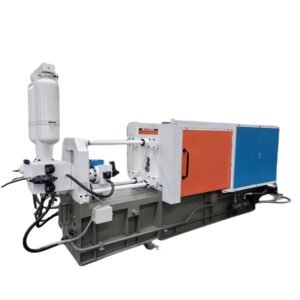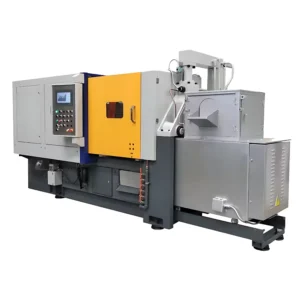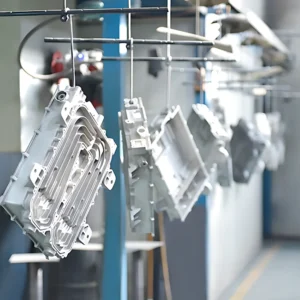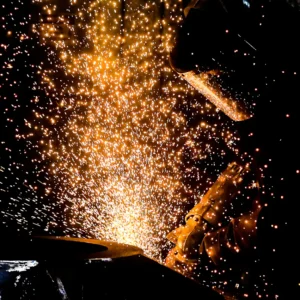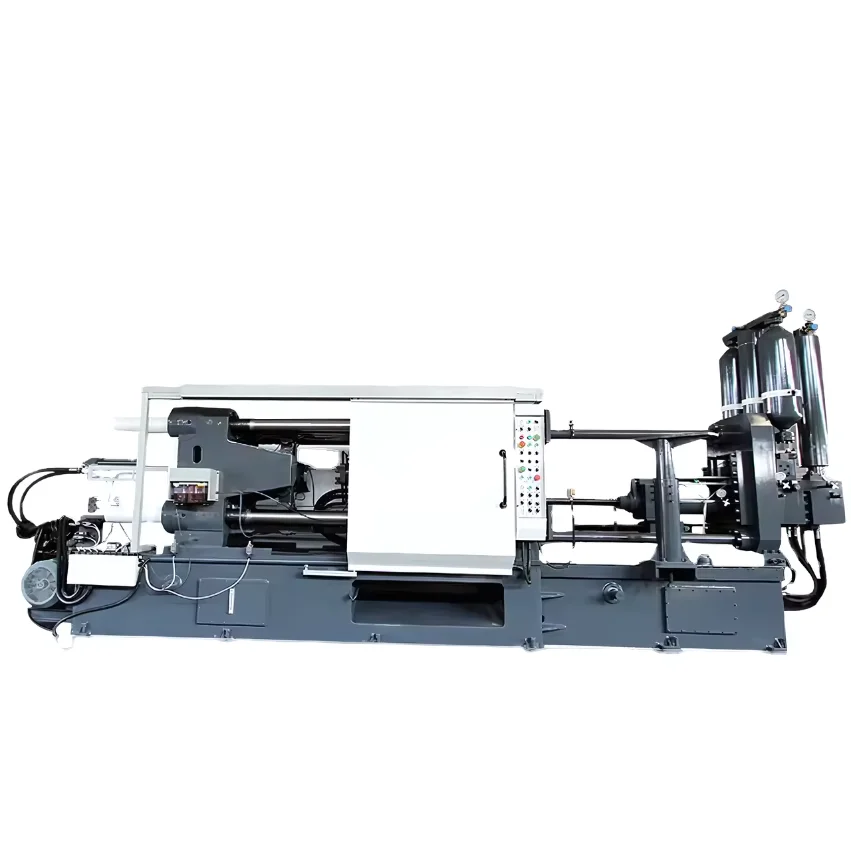Die casting is a highly efficient metal casting process. Using high pressure to inject molten metal into a mold, high-precision parts can be produced with a polished, smooth, or textured surface. This article takes you on an in-depth look at die casting from the following sections.
- What is Die Casting
- Die Casting Advantages and Disadvantages
- How Die Casting Works
- Types of Die Casting
- Materials for Die Casting
- Die Casting vs Sand Casting
What is Die Casting
Die casting is a manufacturing process that specializes in creating metal parts with complex shapes and smooth surfaces. In this process, molten metal is injected into a mold under high pressure. Once the metal cools and solidifies, it forms a detailed and durable part that is then removed from the mold.
This process is suitable for the production of high-volume parts because it is fast and maintains consistent product quality. It is typically used to manufacture large, complex shapes and high precision small to medium-sized parts. Examples include the automotive, aerospace, electronics, and consumer goods industries.

Die Casting Advantages and Disadvantages
Die casting is a common manufacturing process used to produce metal parts with precisely defined, smooth, or textured surfaces. It involves injecting molten metal into a mold cavity under high pressure. The advantages and disadvantages of die casting are outlined below:
Advantages Of Die Casting
Here are a few of the main advantages of using die castings to manufacture parts.
- high productivity
- Excellent part-dimensional accuracy
- Ability to produce complex part designs
- Thin-walled castings are stronger and lighter than other casting methods
- Excellent surface finish
Disadvantages of Die Casting
While there are many advantages to using die casting to manufacture parts, there are also some shortcomings. Here are a few of the main disadvantages of using die casting to manufacture parts:
- High initial cost
- Limited part size
- Limited to high flow metals
How Does Die Casting Work?
In the die casting process, there are usually several important key steps. Next, we will introduce you to the various steps of the die-casting process. Click here for die casting services.
Step 1: Mold Preparation
Molds are usually made of steel or aluminum and can withstand the high temperatures and pressures of the die-casting process. Through mold die-casting, it can be processed according to the required shape and details. In addition, in order to make the casting easy to de-mold, prevent the molten metal from adhering to the mold surface.
Step 2: Molten Metal
The molten metal that has been heated to a specified temperature is injected into a closed mold cavity under high pressure. Additionally, maintain this pressure until the metal solidifies, ensuring that the metal fills all of the intricate details and contours of the mold.
Step 3: Cool and Solidify
After the metal is filled, wait a while for the metal to cool and solidify in the mold. Cooling time may vary depending on the metal type and size of the cast part.
Step 4: Eject and Dispose
When the metal is completely solidified, the mold is opened and the formed workpiece is ejected. Also, buff the material, apply a protective coating, or remove excess material.
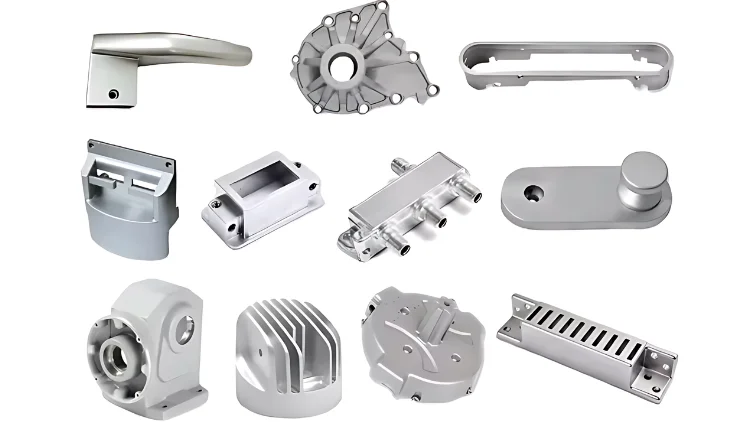
Types of Die Casting
There are two main types of die casting processes: hot chamber die casting and cold chamber die casting. Each method is suitable for different types of metals and production requirements.
Hot Chamber Die Casting
- Working Principles: In hot chamber die casting, the metal is usually melted in a furnace and then injected into the die cavity of the die casting machine using a special device. After waiting for some time, the metal cools and solidifies in the mold.
- Applications: Hot chamber casting is mainly used in the field of metals such as zinc, magnesium, and other low melting point alloys that are less prone to erode and corrode metal cans, cylinders, and plungers.
Cold Chamber Die Casting
- Working Principles: In cold chamber die casting, the molten metal is first poured into the injection sleeve or cavity of the injection barrel before being pushed into the mold.
- Applications: Suitable for metals such as aluminum and other high melting point alloys. Parts such as engine mounts, gearboxes, and other critical components are widely used in the automotive industry.
Materials for Die Casting
In the die casting process, the main according to the characteristics of the product and the use of the requirements to choose the material. The following are a few of the most common die casting materials:
Aluminum
- Properties: Lightweight, high strength, excellent corrosion resistance, good thermal conductivity.
- Applications: Widely used in automotive parts, aerospace components, and consumer electronics.
Zinc
- Characteristics: Good ductility, high impact strength, easy to cast.
- Applications: Ideal for small complex parts, hardware, and consumer products.
Magnesium
- Features: Lightweight, magnesium alloy is 75% lighter than steel and 33% lighter than aluminum.
- Applications: Commonly used in industries such as automotive parts, electronics, and aerospace.
Copper
- Performance: high hardness, good corrosion resistance.
- Applications: Used in electrical components, pipe fittings and industrial machinery parts.
Die Casting vs Sand Casting
Below is a comparison of the two main metal casting processes, die casting and sand casting.
| Aspect | Die Casting | Sand Casting |
| Material Types | Mainly non-ferrous metals like aluminum, magnesium, and zinc. | Can use both ferrous and non-ferrous metals, including iron, steel, aluminum, and bronze. |
| Precision | High dimensional accuracy | Lower precision compared to die casting |
| Surface Finish | No additional surface treatment required | Rough surface, requires additional treatment |
| Production Rate | High production rates | Slower production rate |
| Tooling Cost | High initial mold cost | Relatively low mold cost |
| Flexibility | Lower flexibility | High flexibility |
Related read: NC vs. CNC Machines What Is the Difference.
FAQ
Metal Injection Molding vs. Die Casting
Metal Injection Molding (MIM): This process involves mixing metal powders with a binder material to form a feedstock, which is then injected into a mold. After molding, the binder is removed and the part is sintered to achieve its final density and strength. MIM is ideal for producing small, complex, and high-precision parts with excellent material properties.
Die Casting: In this process, molten metal is injected into a mold under high pressure to form the part. Die casting is best suited for producing large volumes of parts with good dimensional accuracy and smooth surfaces. It is commonly used for larger, less intricate parts compared to MIM.
Is Steel Suitable for Die Casting?
Die casting is typically used with non-ferrous metals due to their lower melting points. While ferrous metals like steel can be die-cast, their high melting points significantly reduce the life of the molds. This makes die casting less practical for high-performance and high-temperature applications, as the molds wear out quickly and the process becomes less cost-effective.
What Are the Two Types of Die Casting?
Die casting primarily uses two methods: hot-chamber and cold-chamber die casting. Each method is tailored for different metals and applications.
Hot-Chamber Die Casting: Ideal for metals with lower melting points like zinc, magnesium, and lead alloys. In this process, a “gooseneck” mechanism submerged in molten metal injects the metal into the die.
Cold-Chamber Die Casting: Suitable for metals with higher melting points such as aluminum, brass, and copper alloys. Here, molten metal is ladled into the injection chamber, and a piston forces it into the die.
Variations on These Methods:
Low-Pressure Die Casting: Uses lower pressure to fill the mold. It’s often used for aluminum parts that need precise control over metal flow.
Vacuum Die Casting: Employs a vacuum to remove air from the mold cavity. This reduces porosity and improves the mechanical properties of the cast parts.
Summary
After reading this article, you will have a general understanding of the working principle and scope of application of the die-casting machine, so that you can better choose the appropriate service for your project.
If you are looking for a quality die casting service provider, contact us today to get a quote for your project.

